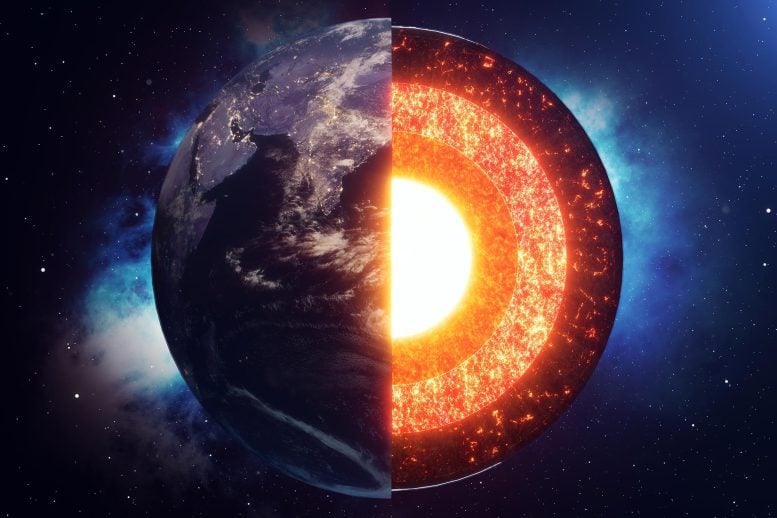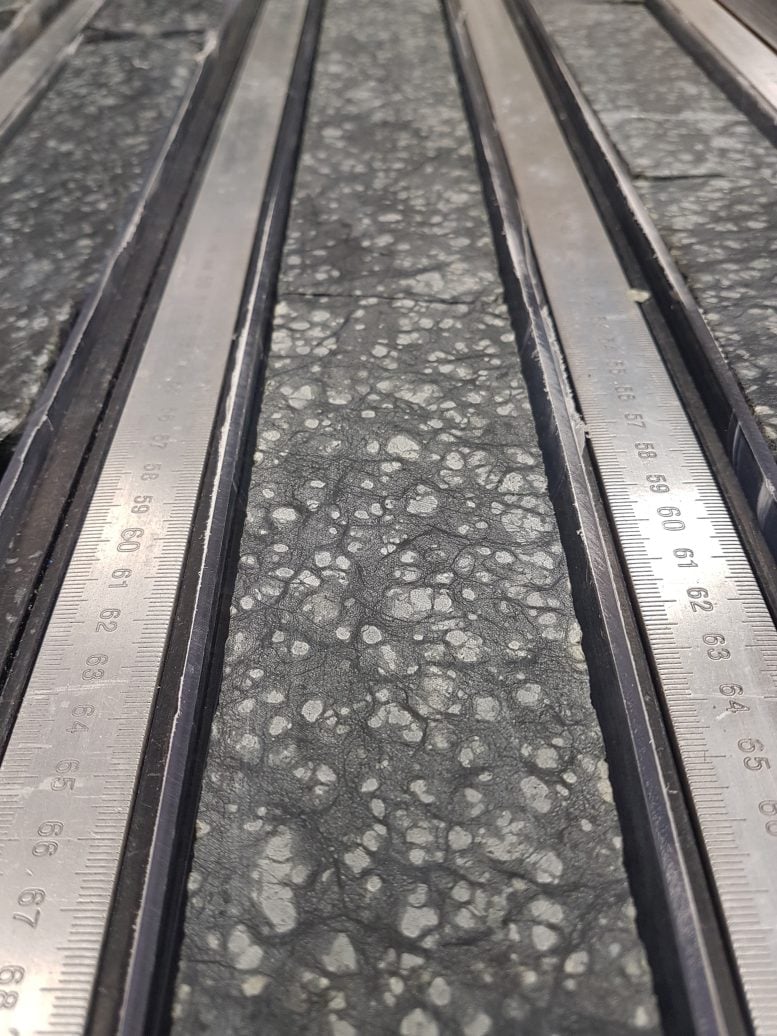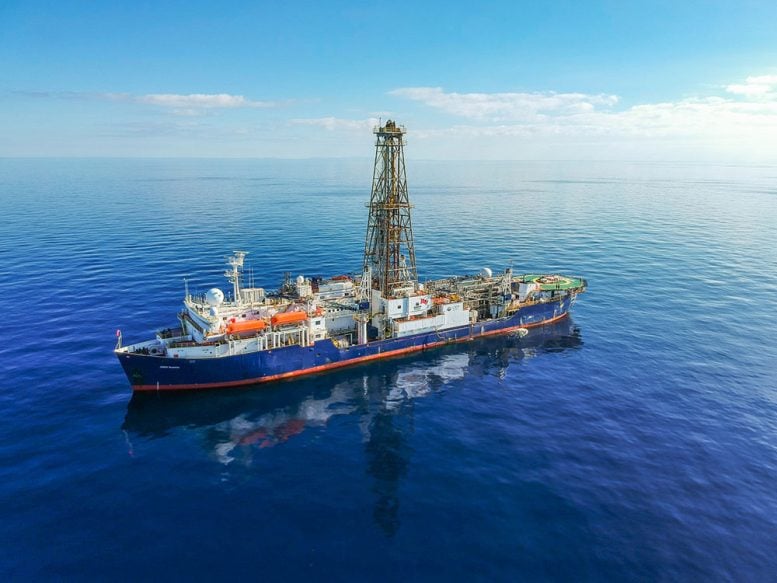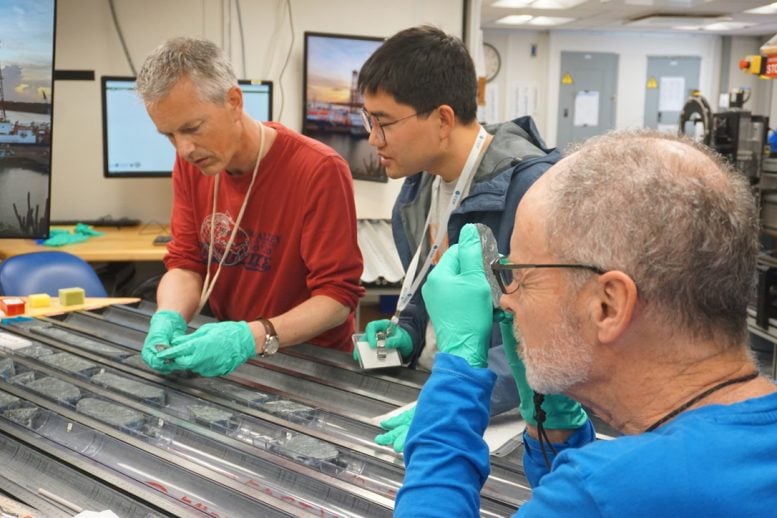Record-Breaking Mantle Core Reveals Earth’s Deep Geological Secrets


A recent 1268-meter drill core into Earth’s mantle from the Mid-Atlantic Ridge has revealed new insights into its mineral composition and processes, challenging existing geological models and underscoring the role of deep-sea drilling in scientific discovery.
A record-breaking 1268-meter (4160 feet) drill core into Earth’s mantle, collected from the Mid-Atlantic Ridge in the North Atlantic, has provided a deep and detailed mineralogical glimpse of the oceanic mantle. The findings reveal new insights into mantle composition, Earth’s deep geology, and the potential biogeochemical conditions involved in the origins of life.

Understanding the Earth’s mantle is crucial for comprehending important details of the Earth system, including terrestrial magmatism, crust formation, and the cycling of elements between the planet’s interior, hydrosphere, atmosphere, and biosphere. Much of what is known is based on rocks dredged off the ocean floor.
However, these samples often lack critical geological context and are subject to altered mineralogy due to igneous processes and seafloor weathering, including serpentinization. Although rock cores of abyssal peridotites – the primary rock of Earth’s upper mantle – can provide a continuous record, drilling the kilometer-deep holes required to obtain them has proved challenging.

Recent Drilling Success
Now, Johan Lissenberg and colleagues report the recovery and characterization of a nearly continuous 1268-meter-long drill core of serpentinized abyssal mantle peridotite from the mid-Atlantic ridge. The drill core was collected in 2023 during the International Ocean Discovery Program (IODP) Expedition 399, from a hydrothermally active region called the Atlantis Massif. Lissenberg et al. documented significant mineralogical variations throughout the core at various scales, including in levels of serpentinization.

The sample’s pyroxene content was also unexpectedly low compared to other abyssal peridotite samples worldwide, which could be due to high degrees of depletion and pyroxene dissolution during melt flow. And, contrary to common models, melt migration was found to be oblique to mantle upwelling. The authors observed hydrothermal fluid-rock interaction throughout the core, with oxidative weathering down to 200 meters. Gabbroic intrusions were also discovered to play an unexpected role in hydrothermal alteration and in regulating fluid compositions from peridotite-hosted hydrothermal vents, which have been proposed as models of environments where prebiotic chemistry may have led to the development of life on early Earth and other planetary bodies.
“Decades of ocean floor sampling by dredging have painted a rough mineralogical picture of mantle. Yet, each new drilling mission reveals surprising views of mantle and formation of the oceanic crust,” writes Eric Hellebrand in a related Perspective. “More ambitious drilling projects will reveal important pieces to understand the biogeochemical effects of oceanic mantle.”
References: “A long section of serpentinized depleted mantle peridotite” by C. Johan Lissenberg, Andrew M. McCaig, Susan Q. Lang, Peter Blum, Natsue Abe, William J. Brazelton, Rémi Coltat, Jeremy R. Deans, Kristin L. Dickerson, Marguerite Godard, Barbara E. John, Frieder Klein, Rebecca Kuehn, Kuan-Yu Lin, Haiyang Liu, Ethan L. Lopes, Toshio Nozaka, Andrew J. Parsons, Vamdev Pathak, Mark K. Reagan, Jordyn A. Robare, Ivan P. Savov, Esther M. Schwarzenbach, Olivier J. Sissmann, Gordon Southam, Fengping Wang, C. Geoffrey Wheat, Lesley Anderson and Sarah Treadwell, 8 August 2024, Science.
DOI: 10.1126/science.adp1058
“A deeper dive into Earth’s mantle” by Eric Hellebrand, 8 August 2024, Science.
DOI: 10.1126/science.adr2490
Source link



